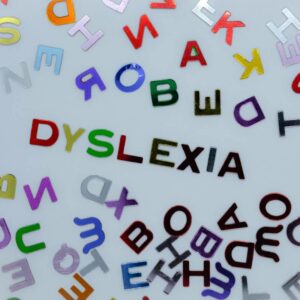When Your Child Is Struggling and Frustrated,
There Is Always a Reason
Neurodiversity is Not a Bad Thing.
I recently had the pleasure of being interviewed by Dr. Hackie Reitman, the author of “Aspertools: The Practical Guide to Understanding and Embracing Asperger’s, Autism Spectrum Disorders, and Neurodiversity (www.aspertools.com). He also recently wrote and produced his first feature film, “The Square Root of 2” (www.thesquarerootof2movie.com); starring Darby Stanchfield of ABC’s hit TV show “Scandal.” Dr. Reitman provided some great exposure to my cause upon being interviewed by the Miami Herald about his book. Since then, we have begun a great collaborative partnership. Together, we are creating an important force to spread awareness of the “neurodiverse.” Along with other dedicated experts, Dr. Reitman and I are creating a resource for any business, corporation, municipality, police station, firehouse, hospital, or household that requires assistance in understanding how different brains work and what they are capable of. We will be teaming up with Lynne Wines, the former CEO of two different banks and the United Way of Broward County. Lynne will be using this resource in her upcoming university fellowship in Boston, and will help launch this endeavor at an international level. Click here to watch a portion of the interview, previously mentioned, which took place in Dr. Reitman’s studio in Fort Lauderdale, Florida.
No Child Is Lazy, Sad, or Angry By Choice
If parents are both involved and supportive, there can only be two reasons as to why a child is struggling in school.
Environmental variables can affect a child’s school performance. Your child may have experienced a bad teacher, frequent school changes, recurrent absences as a result of extended illness, and even dealt with a difficult personal experience (i.e., moving, death of a loved one, etc.). In these situations, generic tutoring centers such as Sylvan, Huntington, or your neighbor who used to be a 2nd grade teacher, will do a fine job of catching them up.
However, there are other groups of children that are frustrated as a result of struggling to do well in school. These children make an effort, attend school regularly, do their homework, and have not responded to parents providing extra help or generic tutoring. As simple as it sounds, these kids merely have brain systems that are not ideally designed for the task demands of school.
It is important to understand that these children are not lazy, unintelligent, or oppositional. In many situations, they may appear to be anxious. While anxiety is not the cause of school problems; school problems are, in fact, the cause of anxiety. These children are indeed intelligent; they simply have brains that do not learn in the same capacity as most other brains do. They are not broken brains; they are different than those which possess the cognitive tools necessary to manage school demands fluidly. Before these children can “catch up”, one needs to know which systems (neuro-networks/cognitive abilities) are impeding attainment of acquired knowledge (reading, writing, and math skills).
Neuroscience can be very complicated. However, it is really not as complex as it seems, with respect to a generic understanding of the necessary cognitive hardware to manage school demands. These cognitive systems take in sensory information (things happening around us) through the visual, auditory and somatosensory systems. Initially, the information being brought in has to be discretely identified to be available for higher-level processing. In some children, the breakdowns occur at this premature stage of processing.
As the information moves upward and forward in the brain, more complex processing occurs. The information (thoughts at this point) becomes integrated with old knowledge and is analyzed with assistance from other sensory systems. It is then interpreted and positioned to be used (new learning) or discarded (forgotten). What is important is saved for future reference and provides an expanded base of information (long-term memory) for more information to be added to as it is acquired (as one learns more).
We have made some subtle modifications to our conceptual model. The model presented below captures all of the cognitive components required for a child to be successful in school.

Beyond academic success these neuro-networks (cognitive abilities), and the ability of these networks to function efficiently (both alone and with other cognitive systems), are facilitators or inhibitors of being emotionally stable, paying attention, and developing social skills. The construction and integrity of the brain systems drives an individual’s ability to manage the demands placed on them in their home, school, and social environments. When the efficiency of the brain’s management of cognitive demands intrinsic to each learning situation is inconsistent, a “train wreck” is inevitable.
Why Should a Child Be Tested?
A thorough school neuropsychological evaluation is the only way to truly understand the challenges to learning, managing emotions, and/or succeeding socially in a manner that can drive prescriptive interventions. All evaluations are not alike. Being trained to give tests and record numbers in a document is not rocket science. However, it does take trained individuals to know what tests to give, why to give selected tests, how to corroborate developing hypotheses of what is happening, and how to analyze the impact of identified cognitive weaknesses on attention, emotional regulation, and social functioning. Most importantly, and what can be considered “rocket science,” is the know how to develop a plan to assist in all areas.
To “do it right” and secure a comprehensive school neuropsychological evaluation, significant investments in time and money are required.
When areas of weakness are clearly identified and brain systems do not develop as expected, there are things that can be done in any case. Beyond what can be done to enhance underdeveloped areas, the information secured is of incredible value in creating an understanding for parents and teachers, as well as driving accommodations that can assist the child in attaining success.
An investment in understanding how a child’s brain works will, in fact, be the best venture a parent can make in their child’s lifetime. With the information secured through a thorough evaluation, we can instruct the “village” (parents, teachers, tutors, etc.) on what can be done to minimize obstacles to success. This will assist in creating a happier and more self-confident child, save a significant amount of money, and reduce possible future heartache.
In our upcoming newsletters, I will propose what can be done to assist with each area of weakness (see conceptual model presented earlier), consistent with the personal budgets of each family. While there are some things that can be done at a minimal cost, there are other very costly interventions. Each child’s plan to reach a higher level of success must be driven by the severity of the issues, impact of the challenges on the child’s self-esteem, availability of time, and most critically, the availability to afford services at a level which can be maintained long enough to yield a robust response.
Announcements
Dr. Celina Ford, following in Dr. Rizzo’s footsteps, completed a year of coursework and passed her board exam to become our second Diplomate of the American Board of School Neuropsychology. We are very proud of Celina! Her increased knowledge of the neuropsychological processes involved in learning, behavior and emotional regulation will be of great value to all she encounters in her journey as a clinician.
Speaking Engagements
Open to the Public! – Although professional presentations are usually offered to a closed facility, Dr. Rizzo will be speaking at the Transitions Conference at Lynn University in January of 2016 and all are welcome! Read below for Conference Discussion.
The Ingredients for Academic
Success – Not Just IQ
The brain, with more than 100 billion cells and perhaps billions of connections creates neural networks that permit individuals to understand, discriminate, and integrate sensory information, with previously learned information, and respond appropriately. Networks of cells are dedicated to one or more discrete cognitive tasks. As one rises up through the brain from the brain stem to the frontal cortex, more and more complex interactions between networks separate humans from lower level mammals. All networks do not develop equally in all individuals (i.e., everyone does not possess the same neural structure or network efficiency as other individuals). Variations in the individual structure and sophistication (strengths and weaknesses of specific networks) drive one’s ability to manage tasks presented to them from moment-to-moment.
 Understanding and developing executive function skills modulated by the frontal cortex are critical in managing life’s demands in the presence of static, which is created by difficulties in the systems that modulate sensory information (subcortical systems) and/or weaknesses in one’s core ability to manage emotional regulation (i.e., anxiety, negative moods, mood changes/volatility, etc.).
Understanding and developing executive function skills modulated by the frontal cortex are critical in managing life’s demands in the presence of static, which is created by difficulties in the systems that modulate sensory information (subcortical systems) and/or weaknesses in one’s core ability to manage emotional regulation (i.e., anxiety, negative moods, mood changes/volatility, etc.).
One’s ability to develop social skills, executive function skills, and manage emotional regulation, is a direct outcome of the circuitry of the individual brain and its appropriateness to match the demands placed on the brain from moment-to-moment. Understanding the basics of how cognition (brain networks) drives behaviors will empower a participant. This is particularly valuable insight in that as one gets older, the frontal cortex should evolve, allowing them to be more proactive, rather than reactive in responding appropriately to educational challenges at a college level, and managing independent living skills.
Technology-Based Remediation
Technology-based remediation continues to gain momentum as a robust way to improve phonological processing, language skills, and both reading and reading comprehension skills. Technology web-based remediation provides help at a reasonable cost and maximizes the ease of one’s time and access, in a manner that is engaging and more fun than traditional tutoring.
There are many ways to improve phonological processing, language, reading decoding/word recognition skills, vocabulary, and reading comprehension. The key to success is dependent upon the right intervention, precise challenges/weaknesses in subcortical areas such as cognitive processing limitations, and intensity/frequency. The more time invested with empirically supported techniques, the better the outcome. Historically, due to exuberant fees charged by reading specialists, our most successful model/approach has been to pair 2 or 3 sessions of Orton Gillingham, Lindamood Bell, or Susan Barton, with select modules of LIPS or Seeing Stars, with select modules of Fast ForWord (such as Language V2 – Language to Reading, Literacy, or Advanced Literacy).
When families cannot afford the fees typically charged by reading specialists, the next option is to pursue Fast ForWord on a daily basis. The right Fast ForWord module, paired with the appropriate neurocognitive profile, results in great gains. There is an excess of research which supports Fast ForWord. However, there is also research that criticizes the program. Typically, criticism comes from those who have something to lose (e.g., if technology proves to be both better and cheaper than expensive prescriptive tutoring). Groups such as the International Dyslexia Association pride themselves as having members (specialized teachers) who are skilled in what they believe to be the best reading approaches. Therefore, any shift toward technology would simply be a tremendous financial loss for such individuals. As a consequence, the camps which criticize “technology-based remediation” the most are the ones that have the most to lose. This is due to the cost efficiency of Fast ForWord vs. reading tutors, who charge in excess of $100 to $150.00 per hour. Overall, the trick is to combine the appropriate technology-based remedial trainings, along with live tutors. The following link contains a summary of 30 years of research on Fast ForWord: www.scilearn.com/results/research-independent-reviews.
Fast ForWord is more engaging than most tutors, easily accessed, cost effective, and has plenty of research to support it. If your child is behind in reading, and traditional steps to help have failed, Fast ForWord should be taken as a very serious option that won’t break the bank! Call our office and arrange for a free demonstration of Fast ForWord and other technology and web-based remediation training programs.
Some Cool Stuff To Consider
Check out this link to a video of famous people with dyslexia:https://www.youtube.com/embed/l_qGJ9svUbM
Great books to consider on the exploding science of the brain:
The Myth of Mirror Neurons: The Real Neuroscience of Communication and Cognition
Author: Gregory Hickok
Abstract: In 1992, a group of neuroscientists from Parma, Italy, reported a new class of brain cells discovered in the motor cortex of the macaque monkey. These cells, later dubbed mirror neurons, responded equally well during the monkey’s own motor actions, such as grabbing an object, and while the monkey watched someone else perform similar motor actions. Researchers speculated that the neurons allowed the monkey to understand others by simulating their actions in its own brain.
Mirror neurons soon jumped species and took human neuroscience and psychology by storm. In the late 1990s, theorists showed how the cells provided an elegantly simple new way to explain the evolution of language, the development of human empathy, and the neural foundation of autism. In the years that followed, a stream of scientific studies implicated mirror neurons in everything from schizophrenia and drug abuse to sexual orientation and contagious yawning.
In The Myth of Mirror Neurons, neuroscientist Gregory Hickok reexamines the mirror neuron story and finds that it is built on a tenuous foundation – a pair of codependent assumptions about mirror neuron activity and human understanding. Drawing on a broad range of observations from work on animal behavior, modern neuroimaging, neurological disorders, and more, Hickok argues that the foundational assumptions fall flat in light of the facts. He then explores alternative explanations of mirror neuron function while illuminating crucial questions about human cognition and brain function: Why do humans imitate so prodigiously? How different are the left and right hemispheres of the brain? Why do we have two visual systems? Do we need to be able to talk to understand speech? What’s going wrong in autism? Can humans read minds?
The Myth of Mirror Neurons not only delivers an instructive tale about the course of scientific progress – from discovery to theory to revision – but also provides deep insights into the organization and function of the human brain and the nature of communication and cognition. Where to buy: http://www.amazon.com/The-Myth-Mirror-Neurons-Communication/dp/0393089614
The Other Brain: The Scientific and Medical Breakthroughs That Will Heal Our Brains and Revolutionize Our Health
Author: R. Douglas Fields, Ph.D.
Abstract: Despite everything that has been written about the brain, a potentially critical part of this vital organ has been overlooked-until now. The Other Brain examines the growing importance of glia, which make up approximately 85 percent of the cells in the brain, and the role they play in how the brain functions, malfunctions, and heals itself.
Long neglected as little more than cerebral packing material, glia (meaning “glue”) are now known to regulate the flow of information between neurons and to repair the brain and spinal cord after injury and stroke. But scientists are also discovering that diseased and damaged glia play a significant role in psychiatric illnesses such as schizophrenia and depression, and in neurodegenerative diseases such as Parkinson’s and Alzheimer’s. Diseased glia cause brain cancer and multiple sclerosis and are linked to infectious diseases such as HIV and prion disease (mad cow disease, for example) and to chronic pain. The more we learn about these cells that make up the “other” brain, the more important they seem to be.
Written by a neuroscientist who is a leader in glial research, The Other Brain gives readers a much more complete understanding of how the brain works and an intriguing look at potentially revolutionary developments in brain science and medicine. Where to buy: http://www.amazon.com/The-Other-Brain-Breakthroughs-Revolutionize/dp/0743291425
“I’d Rather be Fishing” with Coach Mike and Staff!
Yellowtail Snapper, Mutton Snapper, and Dolphin are in!
Let’s Go Get Them!
This is a Social Skills oriented event run by Child Provider Specialists. The staff participates in this activity four times per year. Participants learn to improve social skills in a relaxed, fun oriented, real life, leisure-time activity. Children learn the value of patience and the reward of team work. Children who attend have opportunities to bond with peers and coaches, problem solve, feel a sense of accomplishment, and of course, feel the the thrill of being an angler! Our staff prides itself on providing an experience that has positive long lasting effects.
We launch from our local beach and fish the beautiful reefs of South Florida for Grouper, Snapper, Yellowtail, King Fish, and much more!
Come Join Us: Sunday October 4th, 2015
Where: Fisherman Headquarters
301 Sea Breeze Blvd.,
Fort Lauderdale 33316
Contact Karen to reserve your spot. 954-577-3396






